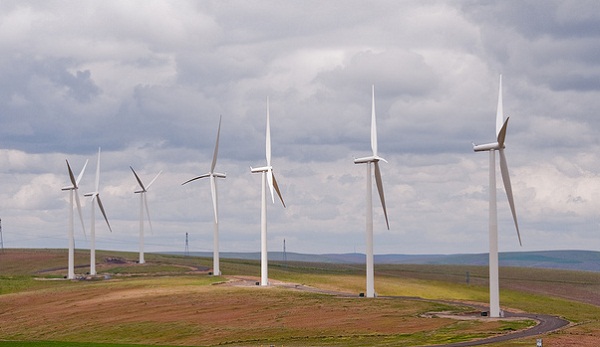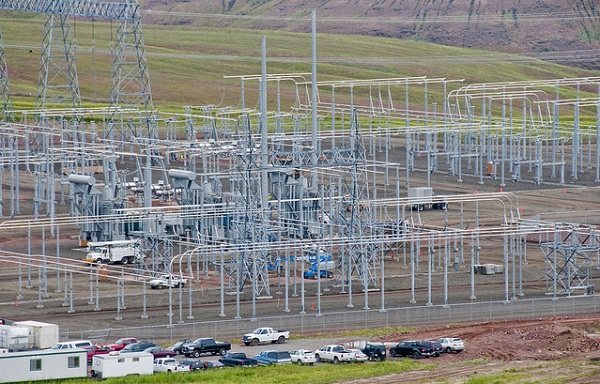There’s a new wind power plant that can claim the title of “Biggest in Washington State” that’s up and running—a little earlier than expected.
Puget Sound Energy (PSE) said the Lower Snake River Wind Facility began generating up to 343 megawatts (MW) of electricity on Leap Day. The company said the plant, built entirely on privately owned agricultural lands, was expected to generate enough electricity to power about 100,000 homes, on average.

Work on the project began in May 2010, and the first turbine went up a year ago. In an ironic twist, that initial installation had been delayed by—you guessed it—high winds. After that hiccup, work apparently went a lot more smoothly: PSE anticipated putting the full 149-turbine plant in operation by spring this year, but as the calendar and the cold, damp Northwest weather indicate, it’s still very much winter.
PSE said in its announcement that Lower Snake River “ties into the Northwest electric grid at the Bonneville Power Administration’s newly completed Central Ferry substation, constructed along the wind farm’s northern boundary.” Given that, it will be interesting to see how this spring’s mountain-snow runoff plays out in the Northwest. Last year, heavy runoff in late spring, combined with stagnant electricity demand, gave BPA more power than it knew what to do with. So the agency, which controls around three-quarters of the regional grid, shut down wind power at times.
This drew the ire of wind developers, many of whom lost out on tax incentives tied to production. They fought the BPA policy in front of federal regulators, who ruled that the BPA was acting unfairly and told the agency to find a better way. BPA has since proposed splitting lost revenue with wind suppliers 50-50 when it has too much power and wants to shut down wind. The wind folks weren’t thrilled with that idea, however, and how the dispute will ultimately be solved remained unclear.
Transmission is a big aspect of the Lower Snake River project, since, as PSE noted, 99 percent of its customers live west of Cascades, the mountains that divide Washington’s wet, green and more urban areas from the dry, rural farmlands in the eastern part of the state. But the company argues that the project—like its other other wind developments in the state, Hopkins Ridge (157 MW) and Wild Horse (273 MW)—has and will provide benefits to residents who live amid the massive turbines.
“The Lower Snake River project has created more economic activity in Garfield County than we’ve seen since the early 1970s, when Lower Granite Dam was being built,” Alesia Ruchert, Garfield County managing director for the Southeast Washington Economic Development Association, said in the PSE announcement. “It’s been a definite shot in the arm.”

PSE said that around 25 permanent employees—its own and from turbine manufacturer Siemens—are employed to operate the plant and maintain its wind turbines. During the two-year construction period, the project’s workforce averaged around 150, the company said.
By the way, this is officially Phase 1 of the Lower Snake River wind farm. What about future phases? PSE said it has permits to expand in both Garfield and Columbia counties, and “will consider regulatory requirements, energy-market conditions and its customers’ energy needs” before embarking on additional phases.